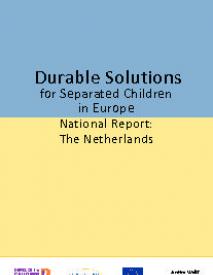Durable Solutions for Separated Children in Europe. National Report: The Netherlands
1.1 Separated Children
Separated children, like adults, flee their countries for a number of reasons. Some travel to join their families
who have previously migrated. Others flee war, civil unrest, natural disaster or persecution. Some children
migrate in search of work, opportunity, education or an improved standard of living. Additionally, children
may migrate unaccompanied to escape a difficult family environment. This can involve sexual or physical
maltreatment or the prospect of forced marriage. Certain forms of persecution are specific to children, and
especially to female children. Others may migrate to escape female genital mutilation, child marriage or
conscription into formal or informal armed forces. Some separated children are also sent by their parents to
pursue a better life, both for the child and the family.
A significant body of research has emerged over recent years around the specific vulnerability of separated
children. The literature argues that separation from persons responsible for the child’s protection and physical
and emotional well-being can be traumatic for children and increase their vulnerability, contending that
separated children are at a high risk of experiencing:
• Sexual exploitation and abuse including early/forced marriage and human trafficking;
• Military recruitment;
• Child labour including forced domestic labour;
• Detention;
• Discrimination;
• Neglect;
• Violence.
Separated children, once in the country of arrival, are still particularly vulnerable because they lack essential
adult care and the traditional support systems of parents and family. It is for this reason that the European
Commission and others argue that a durable solution for separated children must be found as a matter of
priority
Geachte bezoeker,
De informatie die u nu opvraagt, kan door psychotraumanet niet aan u worden getoond. Dit kan verschillende redenen hebben,
waarvan (bescherming van het) auteursrecht de meeste voorkomende is. Wanneer het mogelijk is om u door te verwijzen naar de bron
van deze informatie, dan ziet u hier onder een link naar die plek.
Als er geen link staat, kunt u contact opnemen met de bibliotheek,
die u verder op weg kan helpen.
Met vriendelijke groet,
Het psychotraumanet-team.
Reference:
Jantine Walst, & Martine Goeman | 2016
78 p. | Defenceforchildren [host]
https://www.defenceforchildren.nl/images/69/4170.pdf
78 p. | Defenceforchildren [host]
https://www.defenceforchildren.nl/images/69/4170.pdf


